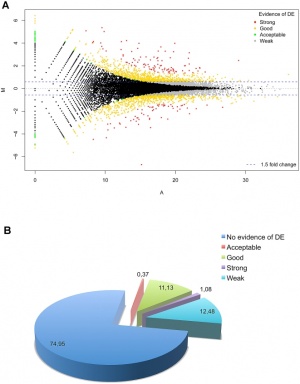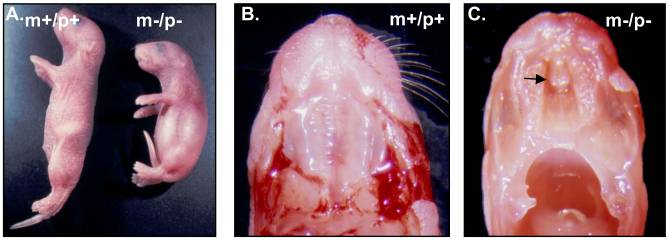User:Z3292953
Lab 4 Online Assessment
- The allantois, identified in the placental cord, is continuous with what anatomical structure?
- Identify the 3 vascular shunts, and their location, in the embryonic circulation.
- Identify the Group project sub-section that you will be researching. (Add to project page and your individual assessment page)
--[[User:Z3292953 13:17, 3 August 2011 (EST)
Lab Attendance
Lab 2- I was here for Lab 2, you saw me but I didn't do lab attendance.
Lab 3- --z3292953 11:03, 11 August 2011 (EST)
Lab 4- --z3292953 11:09, 18 August 2011 (EST)
Lab 5- --z3292953 11:26, 25 August 2011 (EST)
Lab 6- --z3292953 11:26, 1 September 2011 (EST)
Lab 7- --z3292953 11:02, 15 September 2011 (EST)
Lab 8- --z3292953 11:17, 22 September 2011 (EST)
Lab 9- --z3292953 09:12, 6 October 2011 (EST)
Individual Assessment
Lab 1
Question 1
-The first in vitro birth was Louise Brown in 1978 in The UK. The Nobel prize went to Robert G Edwards in 2010
Question 2
- Pregnancy after Age 50: Defining Risks for Mother and Child. Kort DH, Gosselin J, Choi JM, Thornton MH, Cleary-Goldman J, Sauer MV. Am J Perinatol. 2011 Aug 1. [Epub ahead of print] PMID: 21809262 [PubMed - as supplied by publisher]
The paper discusses the risks involved with pregancy for women over 50 years of age. It compares risks such as gestational diabetes, hypertensive disorders and abnormal placentation for women over 50 with women under 50.
Question 3
- Spina bifida and atrial septal defect --z3292953 21:36, 3 August 2011 (EST)
Lab 2
Question 1
Identify the ZP protein that spermatozoa binds and how is this changed (altered) after fertilisation. The protein that binds sperm is zonapellucida 3. After fertilisation, enzymes affect ZP3 modifying it, which causes it to not be able to bind.
Question 2
Identify a review and a research article related to your group topic. Novel concepts in evaluating antimicrobial therapy for bacterial lung infections in patients with cystic fibrosis.Rogers GB, Hoffman LR, Döring G. J Cyst Fibros.2011 Jul 18. [Epub ahead of print]
Vitamin D receptor agonists inhibit pro-inflammatory cytokine production from the respiratory epithelium in cystic fibrosis.McNally P, Coughlan C, Bergsson G, Doyle M, Taggart C, Adorini L, Uskokovic MR, El-Nazir B, Murphy P, Greally P, Greene CM, McElvaney NG.J Cyst Fibros. 2011 Jul 22. [Epub ahead of print]
--z3292953 15:43, 9 August 2011 (EST)
Lab 3
Image uploaded in Lab 2
Question 1
What is the maternal dietary requirement for late neural development?
Both maternal dietary folate and choline are important in late neural development. A deficiency in these may result in abnormalities. PMC2869500
Question 2
Upload a picture relating to you group project.
--Mark Hill 12:13, 16 August 2011 (EST) Better, but you really do not need to call the image "File".
What was wrong with "Mouse - Perinatal lethality and cleft palate deletion from Ube3a to Gabrb3" or "Lethality and cleft palate mice homozygous deleted Ube3a to Gabrb3".
--z3292953 12:03, 16 August 2011 (EST)
Lab 4
Question 1
The allantois, identified in the placental cord, is continuous with what anatomical structure?
The allantois extends into the connecting stalk and gives rise to the umbilical cord. It eventually becomes the urachus in the bladder of an adult. The urachus is also referred to as the median umbilical ligament.
Question 2
Identify the 3 vascular shunts, and their location, in the embryonic circulation.
1. Ductus Arteriosus - connects the pulmonary artery and the descending aorta
2. Ductus Venosus - connects the inferior vena cava and the umbilica
3. Foramen Ovale - connects the two atria
Question 3
Identify the Group project sub-section that you will be researching.
For the group project I will be researching Developmental Staging and Abnormality Classification.
--z3292953 11:19, 24 August 2011 (EST)
Lab 5
Question 1
Which side (L/R) is most common for diaphragmatic hernia and why?
The most common side for diaphragmatic hernia is the left side. This is due to the pleuroperitinal canal being larger on the left side than on the right. It may also be due the fact that the left side closes slightly later than the right.
--z3292953 10:08, 1 September 2011 (EST)
Lab 6
Question 1
What week of development do the palatal shelves fuse?
The palatal shelves fuse in week 9 of development.
Question 2
What early animal model helped elucidate the neural crest origin and migration of neural crest cells?
The chicken model.
Question 3
What abnormality results from neural crest not migrating into the cardiac outflow tract?
Tetralogy of Fallot
--z3292953 16:34, 14 September 2011 (EST)
Lab 7
Question 1
Are satellite cells (a) necessary for muscle hypertrophy and (b) generally involved in hypertrophy?
(a) Studies have shown that satellite cells are not necessary for muscle hypertrophy (b) They are, however, generally involved as they proliferate and differentiate during muscle hypertrophy.
Question 2
Why does chronic low frequency stimulation cause a fast to slow fibre type shift?
It mimics the impulse patterns of a slow. This impulse pattern induces the transformation of fast to slow.
Trisomy 21 Discussion
- The introduction is good
- There are a lot of subheadings, maybe some of them could be combined
- Recent findings might be better towards the end of the page
- The links at the end of the subheadings are good
- The "Screening by Country" section should contain more than one country
- The Prevalence section could also use more examples
- Some of the images need to be properly referenced
- It may have been good to include some backgorund information
- Some of the images, especially the John Down one, didnt seem to fit in the section where they were placed and would be bettter used somewhere more relevent.
--z3292953 12:13, 21 September 2011 (EST)
Peer Assessments
Group 1
- Overall the page was good. There were only a few mistakes identified.
- The Intro was good, it described the disease and gave the reader an idea of what to expect of the page. However, it could do with an image.
- The graph in the epidemiology section is missing the copyright information.
- There doesnt seem to be enough referencing in the etiology section. However, this section was good and the links to the glossary are helpful.
- Clinical manifestions was well set out and easy to read. The use of referencing was good, it shows that a lot of research was done.
- Postnatal Diagnosis appears to be missing an image in the table.
- A few of the words in the glossary section are missing their definitions.
Group 2
- Well researched and set out page
- An image is needed in either Epidemiology or Etiology would be good
- Diagnostic section tests section is good, however, images are needed for BAC and Amniocentesis
- Glossary is well set out, maybe links to the glossary would be helpful
- Subheadings might be useful in the Current/future research section
- some of the referencing will need to be fixed such as double references
Group 3
- The introduction is a little text heavy and might need to summarised
- The timeline could be longer
- Image in the Aetiology section is lacking a copyright notice
- The links in Aetiology are good
- An image would be good in Sign and Symptoms
- Pathogenesis needs more referencing
- Some information has been repeated in more than one section
- Links to the Glossary might be useful
- Overall its a good job
Group 4
- Overall the project is good
- An image could be good in the introduction
- History and Timeline are good
- In the History section it might be useful to have the years in bold
- Well researched
- Image for "Role in Transciption inhibition" needs to be fixed
- Good table in treatment
- Image in Pathogenesis needs copyright info
- Good use of text/tables/images
Group 5
- The images might be better all on the same side
- An image is needed in Development
- "Signs and Symptoms" is a little text heavy and needs more references
- Diagnosis appears to be incomplete
- Glossary needs to be expanded
- Links to the glossary might be helpful
- Double referencing needs to be fixed
Group 6
- The intro needs some referencing
- An image might be good in the introduction
- Histroy section is good. A timeline might be helpful
- Epidemiology section needs more information
- Good table in Diagnostic Tests, however, images are missing
- An image would be good in either Prognosis or Future directions to break up the text
- Good flow to the project
- Good student drawn picture
- Glossary needs to be completed
- Double referencing needs to be fixed
Group 7
- Introduction is good but needs an image
- History section needs referencing
- Epidemiology needs more information
- Pathogenesis is good, maybe a little text heavy
- Student images are good
- More images needed to balance the page
- Good glossary
- Double referencing needs to be fixed
Group 8
- Overall the project is very good
- Maybe more info in timeline
- A description of the image "Cross section of the spiral cord" would be good
- Good balance of text/image/tables
- No dates are mentioned in the current research
- Good use of student image
Group 9
- Introduction is good but an image would be good
- History and Timeline is a little text heavy
- Genetic Factors and Etiology section is very good, well written, good use of tables and images
- Epidemiology is a little text heavy, a image might be good to break it up
- Structural Differences in the Brain section needs more references
- Glossary needs more work
- No references in Phenotype
- Maybe reorganise headings so it flows better
- Overall it is a well researched project but could do with some more images
Group 10
- Overall seems a little short
- Introduction is good
- History seems a little text heavy, maybe a timeline or image would be good to break it up
- Diagnosis needs more detail and maybe an image
- Glossary needs more work
--z3292953 10:47, 29 September 2011 (EST)
Reference
- ↑ <pubmed>2924885</pubmed>

